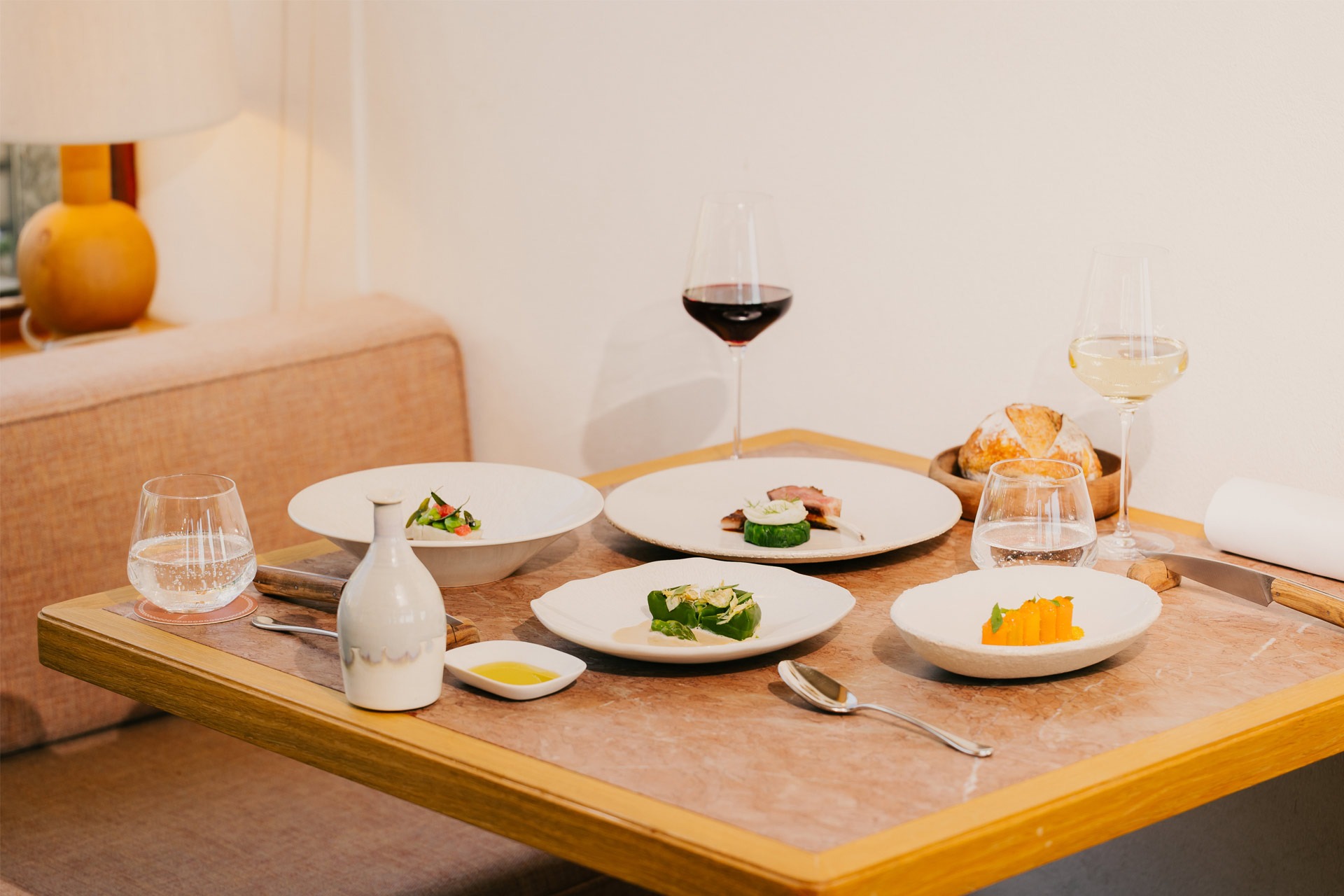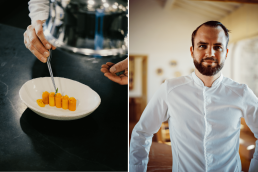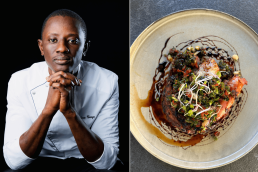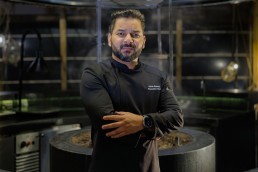Interview: Noël Bérard on his culinary vision at Capelongue
Noël Bérard draws inspiration from the landscapes of the Luberon, where the seasons and local produce set the rhythm for his cuisine. His approach is one of restraint, resulting in minimalist dishes in which each ingredient naturally finds its place.
Originally from Île-de-France, Bérard trained at some of the world’s most prestigious establishments – from Philippe Mille at Les Crayères in Reims to Maxime Gilbert in Hong Kong and Le Petit Nice in Marseille. Returning to France, he worked alongside Édouard Loubet in the kitchens of Capelongue, A Beaumier Hotel & Spa, before taking the helm himself, where he now expresses his own identity by blending the memory of his travels with a love for Provençal terroir.
We sit down with Bérard to discuss his vision for Capelongue and how the region continues to shape his Michelin-starred cuisine at the hotel’s La Bastide restaurant.
When did you first fall in love with cooking?
Little by little, I would say. The desire to eat came before the passion for cooking. When I came home from school, I loved making myself something savoury for snack time, fried eggs or a a croque-monsieur.
How would you describe your culinary style?
I take a more relaxed approach to my profession, stepping back from an often-overhyped world where everything must be given a meaning. For me, there’s always a level of simplicity in cuisine, both in the thinking and the execution. Here at Capelongue, perched above Bonnieux, my inspiration is straightforward: the Luberon region and its surroundings. I know it’s nothing groundbreaking, but it’s essential for any chef to create in harmony with their environment and elevate the terroir.
You’ll see this in the plating too – almost minimalist, graphic and sometimes technical. I try to create a cuisine where the pairings make sense, where the menu, the visuals and the taste all come together naturally. The thought process is simple, but our goal is for balance.
What is the culinary vision for the menus at La Bastide?
At La Bastide, we offer two thoughtfully crafted menus designed to reflect the season and terroir. Each course – whether a cold starter or a meat dish – varies in concept, plating and portion size. Honestly, a lot of my inspiration comes from simply looking out over Bonnieux and the Luberon’s landscape and thinking about what’s fresh and what’s in season. That’s usually where it starts and then I get together with Méric, my second in command, Thomas, our pastry chef, and the rest of the team to brainstorm ideas. After that, it’s about taking the time to really bring those ideas to life which can take hours, and sometimes days.
For me, it’s about making food that’s in tune with the seasons and using super-local products. We’re not trying to be flashy or to show off. I just want to cook honestly and respectfully, connected to this place and all that it has to offer, plate by plate.
Do you have a favourite dish on the menu?
It’s like asking me to pick my favourite child – I don’t have just one. There are a few dishes I really love when everything comes together just right. In particular, I’m thinking about the snail with carrot and bottarga with pastis beurre blanc, or the Sisteron lamb roasted with lavender honey. And then there’s our black olive ice cream with different chocolate textures, which always surprsises people.
What is the most important lesson you’ve learned during your career?
Not to skip steps or climb the ladder too quickly. Take the time to train and refine your skills. A good cook, or chef, is someone with a solid foundation, a curious mind and a broad openness to the world.
What are the biggest challenges faced by the hospitality sector at the moment, and how are you tackling them?
I think one of the biggest challenges is supporting the ‘eat well’ of tomorrow. Too many small-scale cheese makers, vegetable growers, or traditional farmers are really struggling or even quitting because it’s so difficult to make a living. To help protect this fragile ecosystem, we need to focus on restaurants that cook from scratch, using fresh and local produce, and encouraging people to get back into their own kitchens. It’s all about valuing where our food comes from and making sure traditions can continue.
Which chefs have inspired you during your career?
Definitely Philippe Mille and Maxime Gilbert. They were my former chefs and taught me almost everything I know. I also really admire what Yannick Alléno, Jean-François Piège and Michael Arnoult are doing right now. Though there are so many more.

What is your approach to sustainability in the kitchen?
It is really about respect – respect for our surroundings and for the local environment. I always try to source ingredients locally and let the seasons guide what we create in the kitchen. That way, we’re working with what nature gives us, not against it.
But it’s not just about the food. Sustainability is part of our daily habits too. We make sure not to waste water, turn off lights and appliances when they’re not in use, and compost all our organic waste. Plus, building strong, long-term relationships with small local farmers and producers is key. It’s about supporting the whole ecosystem, not just cooking a great dish.
What’s next on your project wish list?
I like to keep my dreams private – they only really make sense once they come to life. But one very exciting thing we’re working on right now is our series of four-hands dinners. That’s when I team up with another amazing chef, and together we create a special menu. It’s a great chance for us to mix our styles, get creative, and cook something really special for the guests.
What is your favourite dish, and who cooks it?
Again, I really don’t have a favorite dish. I prefer to keep things varied, as the options are endless both in France and abroad. That said, I wouldn’t mind sitting down again at a traditional Cantonese table in Hong Kong, enjoying something super spicy.




